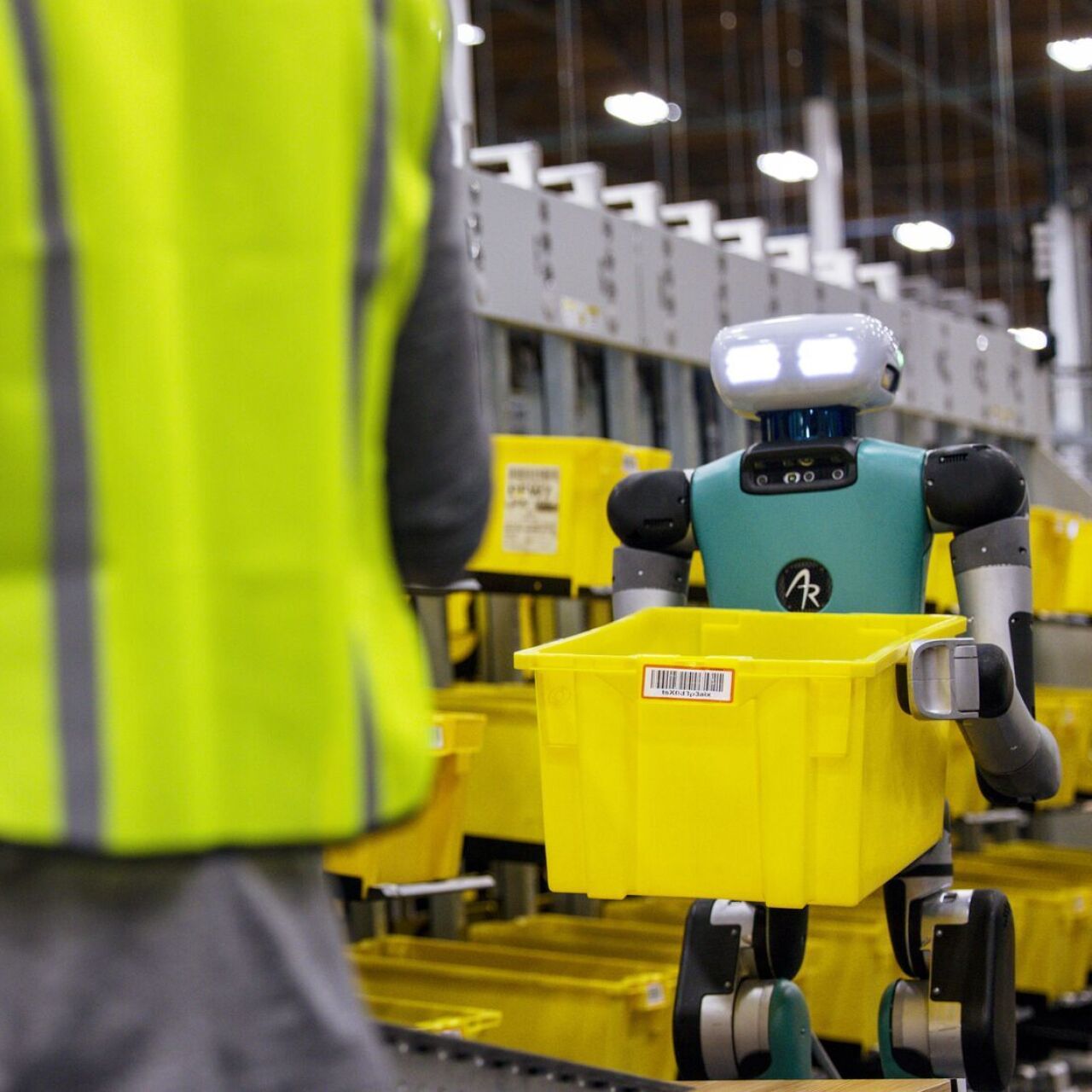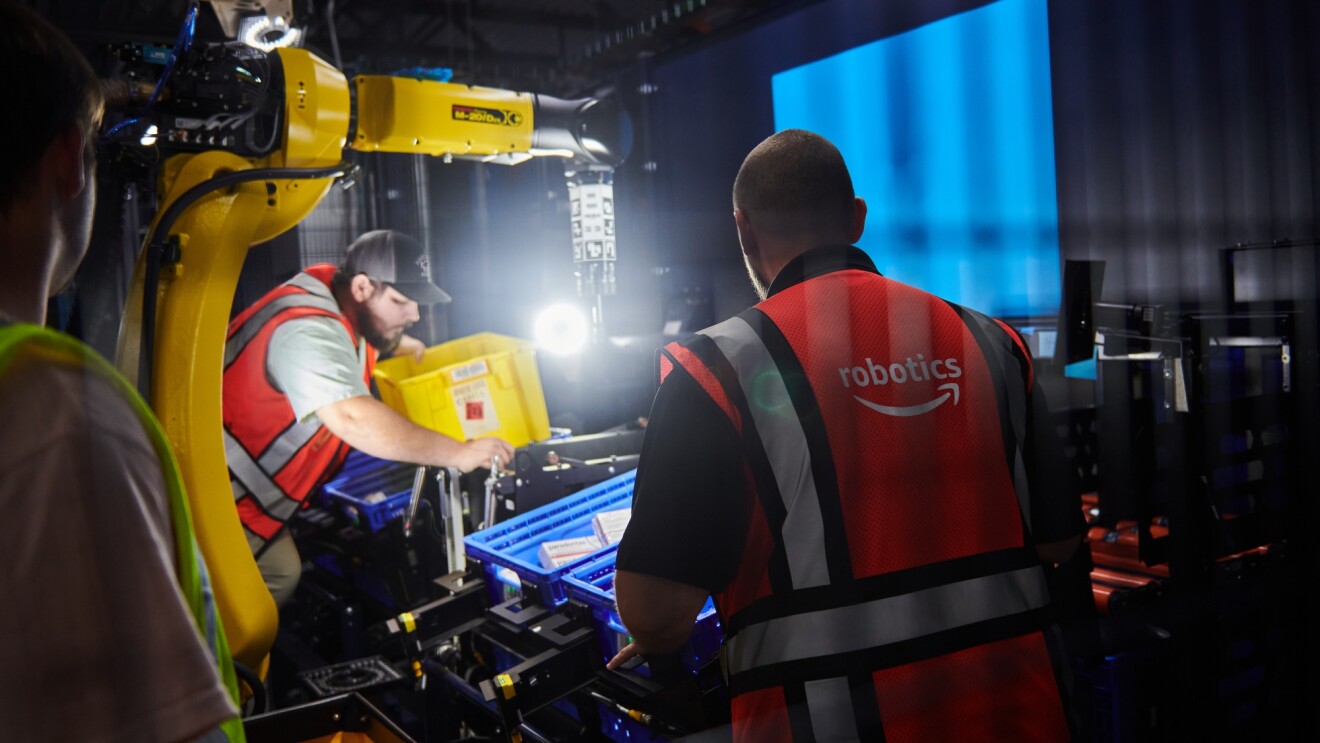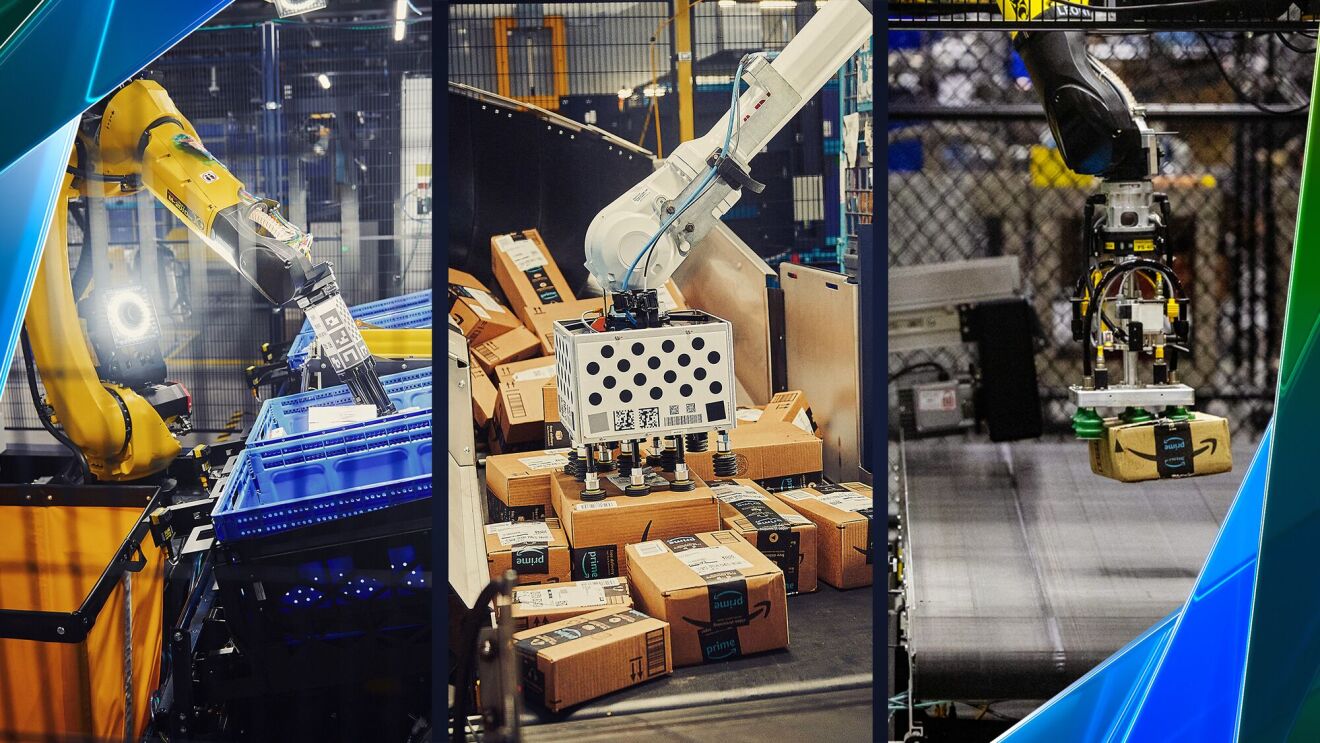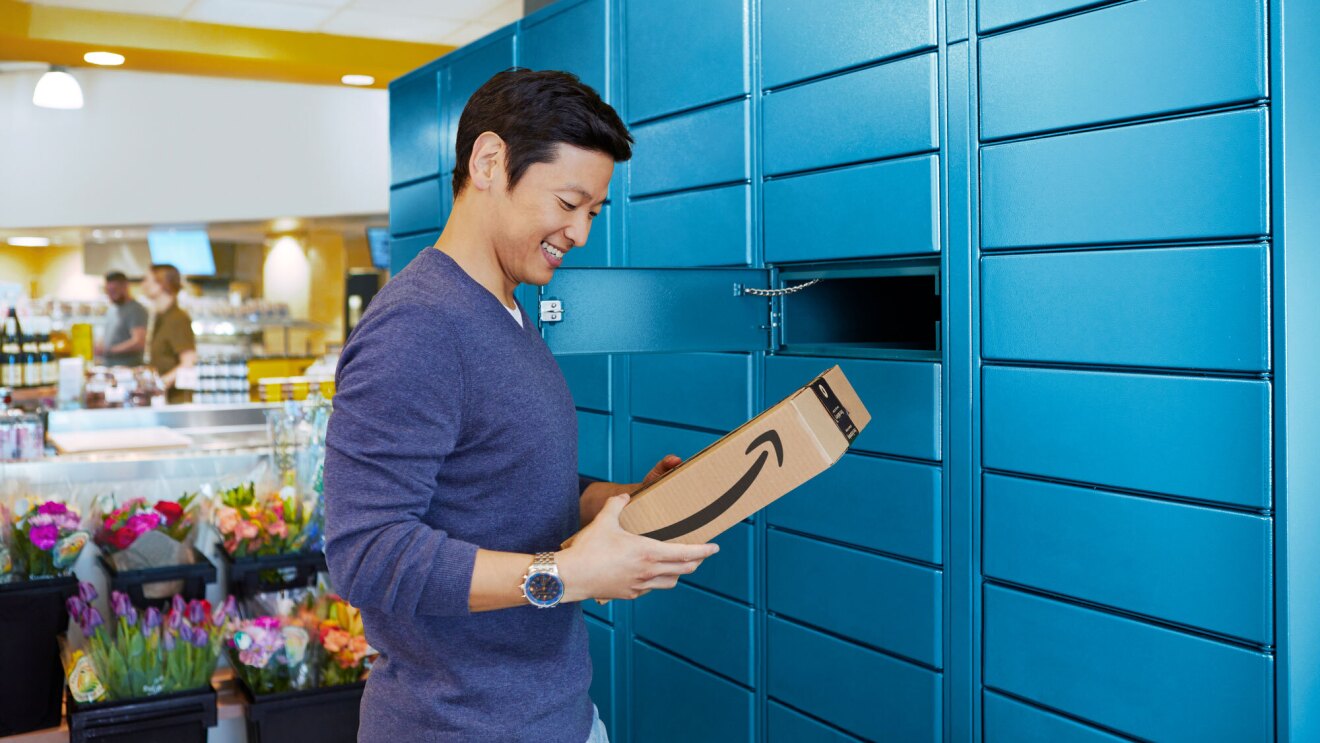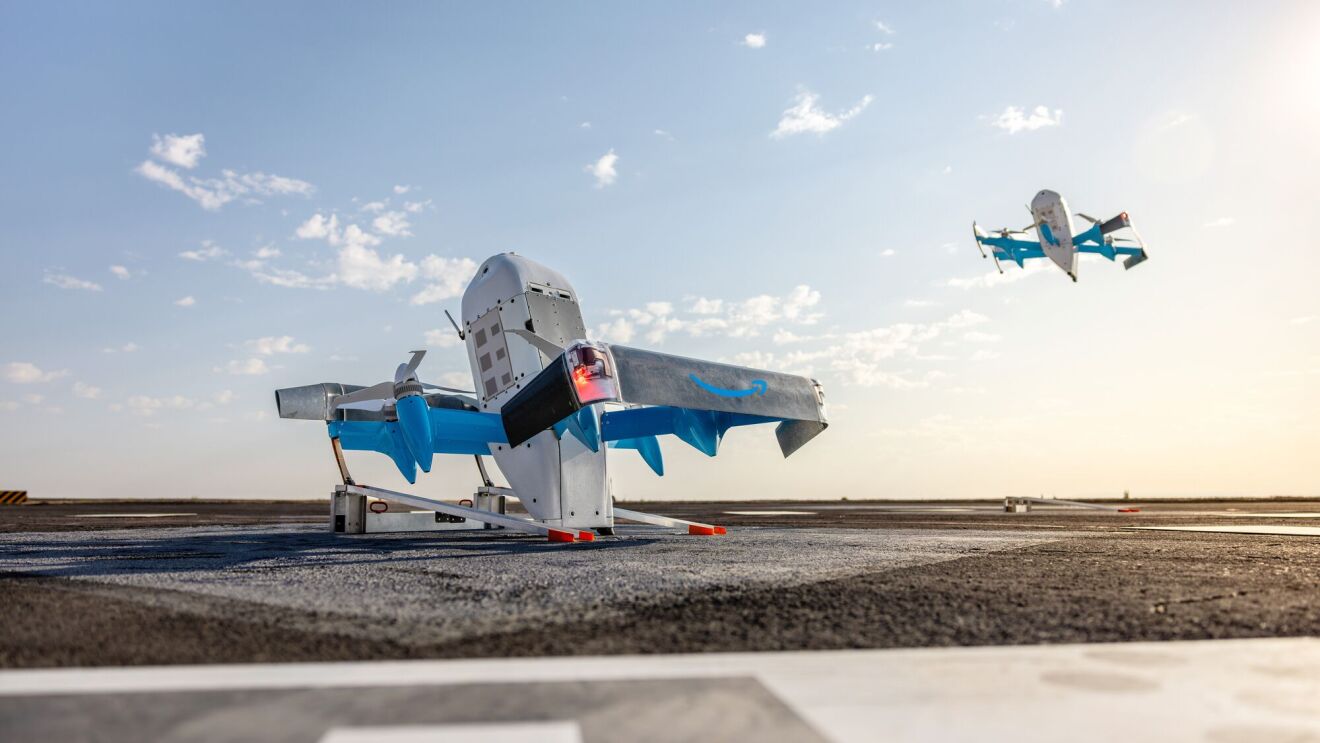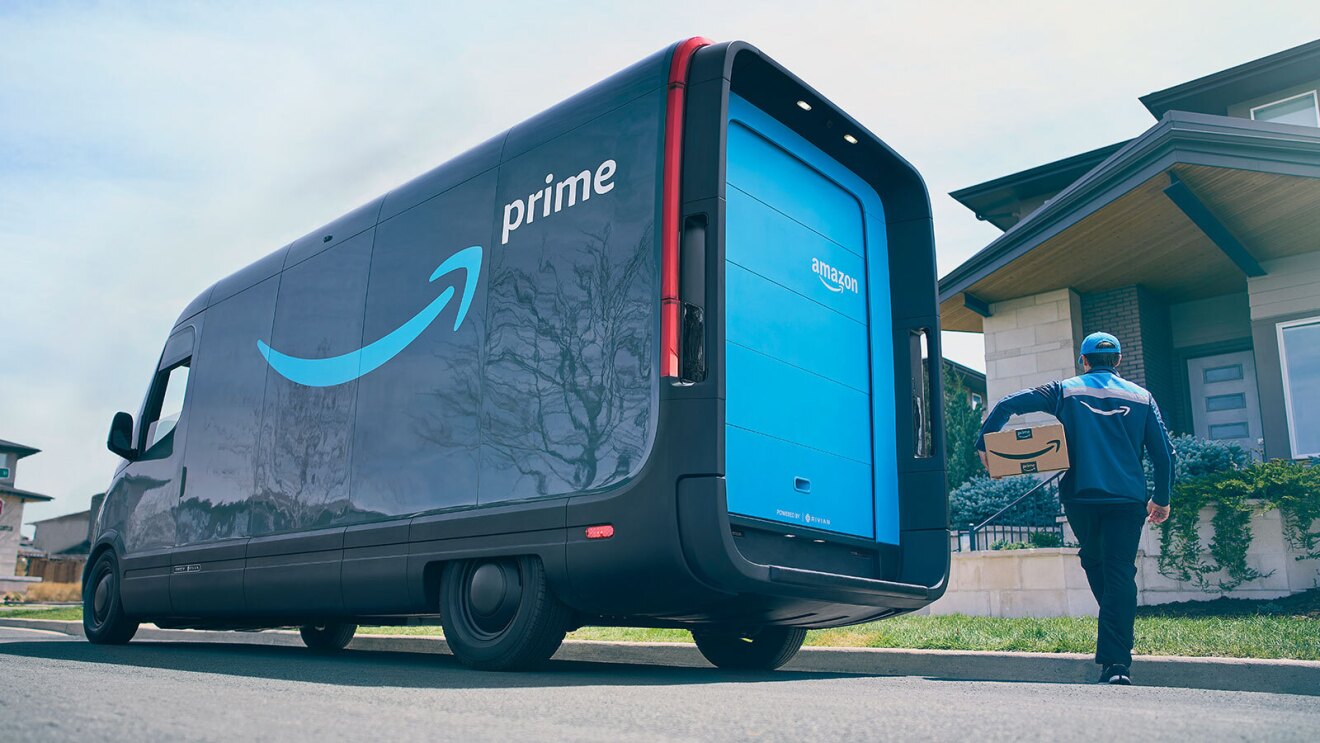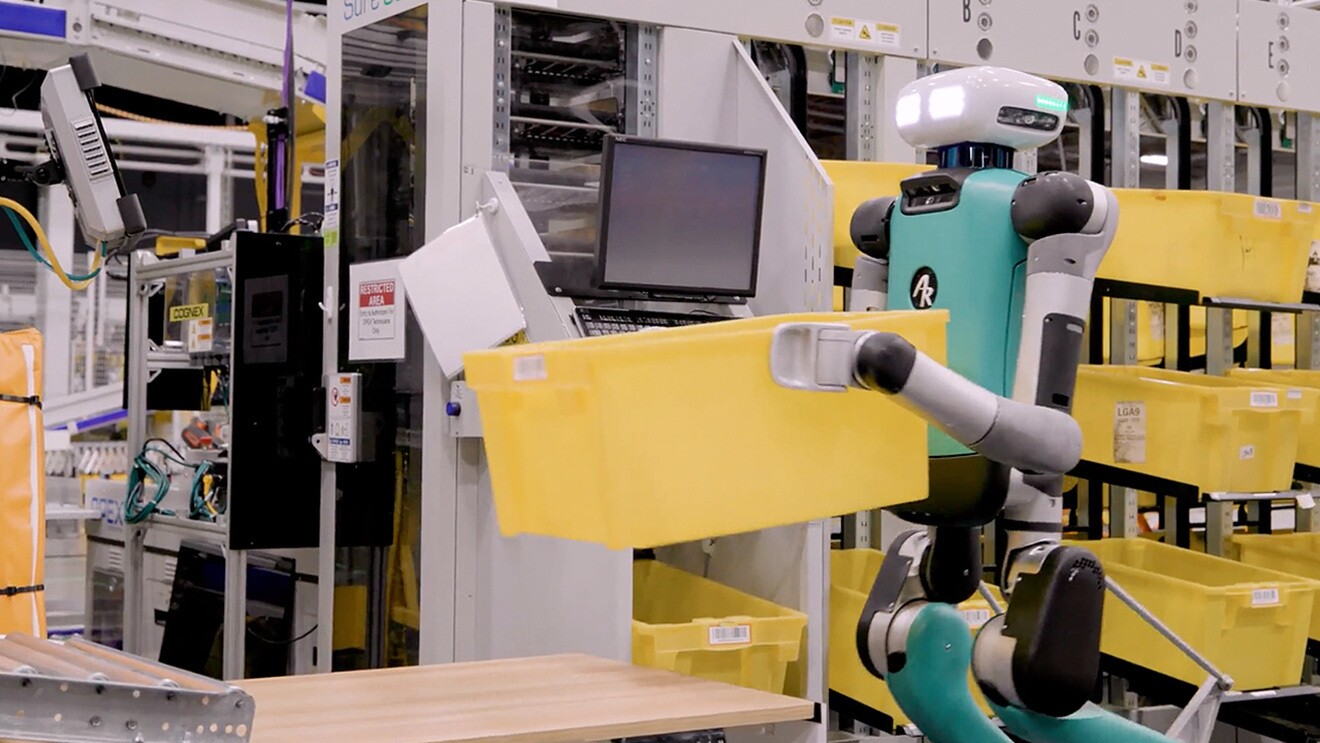The Amazon Industrial Innovation Fund is a $1 billion venture investment program that supports emerging technology companies with direct investments. The Fund aims to help spur and support warehouse automation and supply chain innovation and, since launching in 2022, has made close to a dozen investments in promising technologies. Most recently, investments have been made in Rightbot, which is developing a system to automate the unloading of containers, and Instock, which has designed a robotic storage and retrieval system that offers efficient inventory management.
Franziska Bossart recently joined Amazon to lead the Industrial Innovation Fund and has over 20 years of experience working in corporate venture capital and digital transformation. Her past investments have focused on industrial automation, robotics, and climate tech for companies based in North America, Europe, and Asia.
 Franziska Bossart, director, Industrial Innovation Fund at Amazon
Franziska Bossart, director, Industrial Innovation Fund at AmazonWe met with Bossart to ask her about the latest trends in supply chain technology and where she sees future investments with the Amazon Industrial Innovation Fund.
What were your goals for the Amazon Industrial Innovation Fund in 2024, and how is the Fund evolving?
We launched our inaugural Innovation Challenge program this year to uncover, elevate, and accelerate groundbreaking technologies addressing real-world challenges in our industry. We are excited about the Innovation Challenge initiative to further foster collaboration with AI and robotics entrepreneurs and provide direct access to Amazon’s resources.
In August 2024, we hosted our first challenge centered on discovering innovative packaging solutions that boost inventory visibility at high speeds. As we accelerate delivery times and expand product selection, real-time inventory insights across the supply chain are crucial. Tracking products from ocean containers to customers' doors poses challenges, especially identifying package contents without opening them, which risks slowing deliveries and disrupting efficiency. The Packaging Visibility challenge underscored the need to balance speed with precision in inventory management.
The companies selected for the Packaging Visibility Innovation Challenge were:
- Spectrohm employs radio frequency sensors and AI/ML-powered software to create color 3D images of packages' internal contents at operational speeds, offering a differentiated method to see through packaging.
- Elementary uses AI and computer vision to autonomously detect external package attributes and defects, enhancing productivity and quality with closed-loop-automation systems.
- ThruWave combines millimeter-wave technology with AI/ML-powered software to quickly scan packages, identifying defects, damage, missing items, and foreign objects.
- Rabot focuses on automating the packing process with computer vision, using video to train foundation models that increase efficiency and quality.
- Cambridge Terahertz uses high-resolution 3D imaging radar to see through non-conductive materials, allowing handheld devices to inspect package contents and personnel.
- Lumafield provides industrial X-ray CT scanners paired with AI-powered software to generate 3D images of packages' internal contents as they move along conveyors.
During October, we hosted our second innovation challenge focused on Yard Orchestration for the Middle Mile. Amazon’s Middle Mile Sort Centers handle hundreds of trucks daily, moving packages from fulfillment centers to delivery stations. Congestion in the yards can cause delays and increase costs. To tackle this, Amazon challenged companies to optimize truck flow using insights into schedules, labor patterns, yard layout, and outbound needs, aiming to streamline operations and reduce delays.
The companies selected for the Middle Mile Innovation Challenge include:
- Velostics is a logistics Software-as-a-Service (SaaS) company specializing in unified scheduling of appointments, dock and yard management and digitizing the gate in/out process for shippers.
- Omnix offers a B2B SaaS solution focused on orchestrating and automating operations with AI-driven technology, designed to optimize value chains and resolve complex contingencies.
- EAIGLE is a provider of advanced gatehouse automation and yard visibility solutions that helps logistics and transportation operations streamline and optimize gate management and yard activities.
Now, for our third Innovation Challenge, we’re inviting startups across Europe to join us in transforming First Mile operations through automation. We’re particularly seeking companies developing technologies for automated pallet unloading, autonomous case movement, and automated decanting. Discover more details and apply here!
What are some trends you expect to see across industrial technology investments this year?
With the help of artificial intelligence (AI) and machine learning, algorithms have enabled us to develop technologies that can process large amounts of data, make decisions, and learn from experience. I believe in 2024, we’ll see more widespread use of these intelligent systems. The groundwork for this technology has been in development for decades, but now we’re seeing many pieces coming together to further drive innovation. Advances in perception, AI, manipulation, and control are helping us automate a broader range of tasks.
Progress in computer vision systems has also been remarkable. Take for instance the headway being made by one of our Fund portfolio companies, Vimaan, which has developed AI solutions to accurately view warehouse inventory. Their technology can help capture the dimensions and weight of freight within seconds, reducing operating costs and speeding up how quickly we can deliver goods.
New approaches with hardware hold a great deal of promise as well. I believe there will be meaningful progress with bi-pedal robots in 2024, and we’re interested in further exploring this space. Last October, we announced with Agility Robotics a new pilot to test their Digit robot in our operations, and we’re looking forward to learn more about how we can use a mobile manipulation system within our operations.

What technologies do you think have the most potential for industrial application?
Collaborative technology, where people can work alongside the system, has great potential for industrial application as it can improve and streamline operations and processes while improving safety. The fulfillment technologies we have developed within Amazon have created a safer workplace that reduces repetitive motions and the need to walk long distances or move heavy objects. It also allows our employees to focus on new tasks where they can deliver more value for our customers.
Company data shows that recordable incident rates and lost-time incident rates were 15% and 18% lower, respectively, at Amazon Robotics sites than they were at its non-robotics sites in 2022. We are always looking for ways to further advance our safety objectives and are keen to find other likeminded companies working in this space. Modjoul, which was one of our first investments, has created an entire suite of technology that supports workplace safety and risk reduction powered by data analysis.
What role do you think technology will play in Amazon operations in the years to come?
Technology will keep playing a significant and ever-increasing role in fulfillment centers, and we will see more and more technology adoption throughout our network, including in middle and last mile delivery, which will help us get orders to customers even faster. Take Amazon’s Sequoia system as an example. By integrating multiple robot systems to containerize our inventory, Sequoia will allow us to identify and store inventory we receive at our fulfillment centers up to 75% faster than we can today.
 Sequoia reimagines how we store and manage inventory at our sites.
Sequoia reimagines how we store and manage inventory at our sites.Automation technologies are great at taking on repetitive and predictable tasks; by doing so, they can free up employees to take on new responsibilities. We see this path continuing, allowing us to offer training to our employees in new career paths that will enable them to work with more cutting-edge technologies. Since Amazon introduced robots into its operations, we’ve created hundreds of thousands of new jobs and over 700 categories of new skilled roles within Amazon that didn’t exist within the company beforehand.
We’re eager to find partner companies that support this vision of developing new technologies that can improve the customer and employee experience.
Trending news and stories
